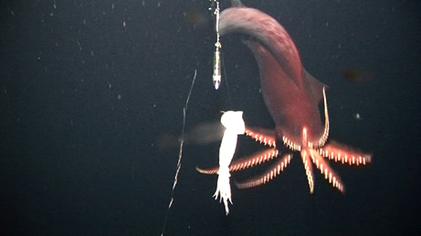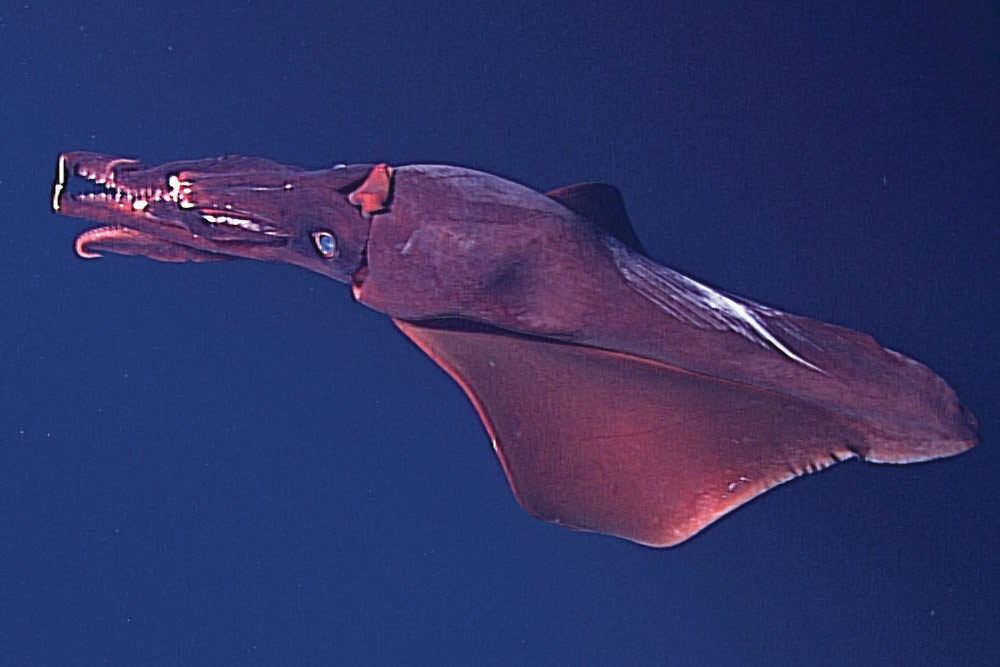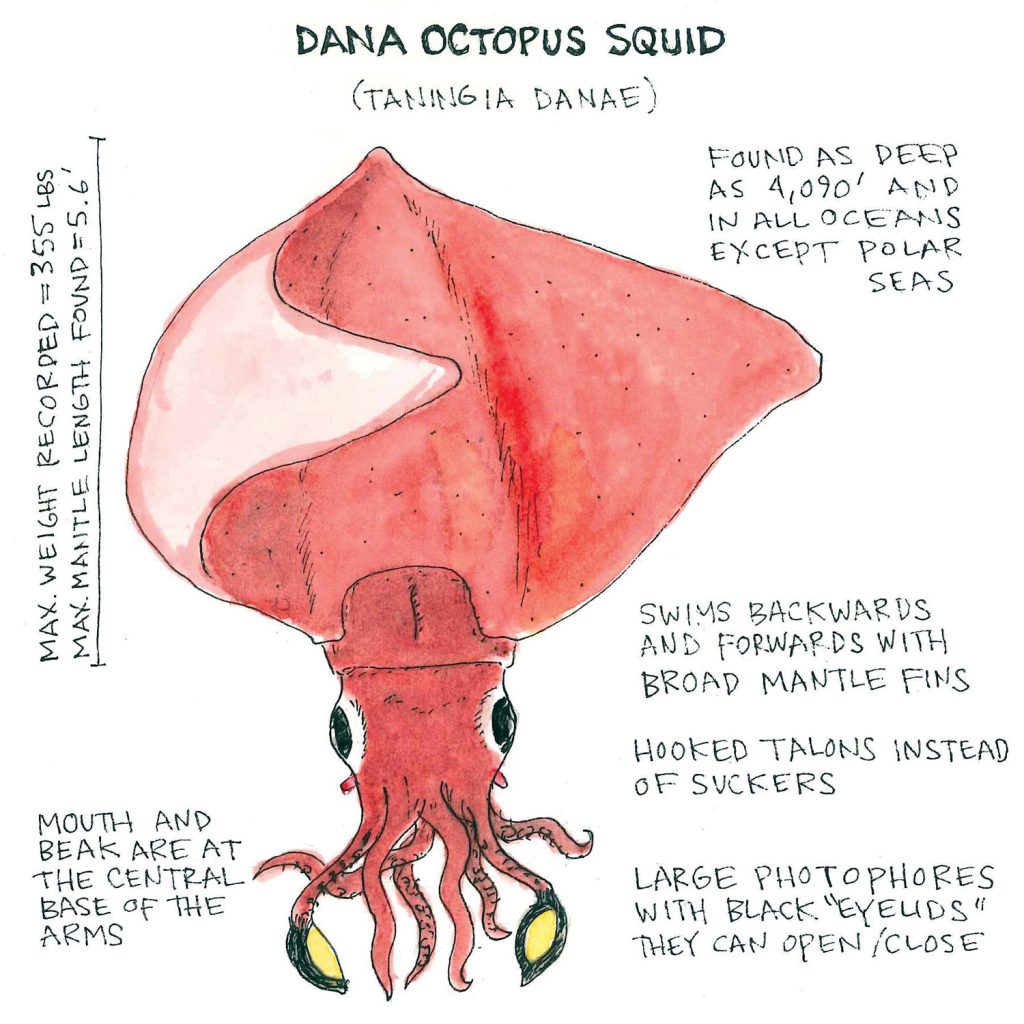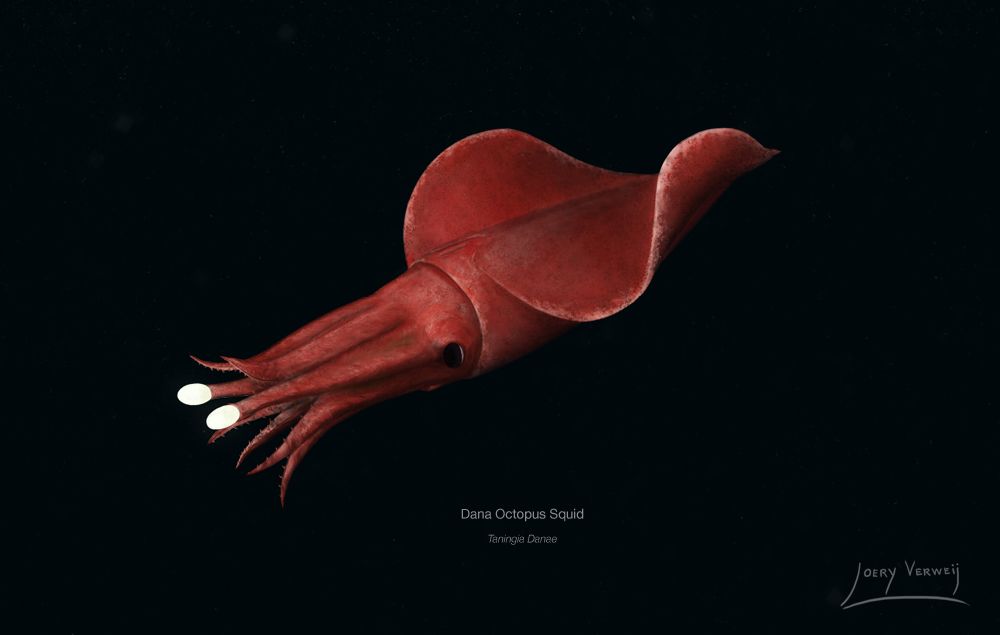Rare deep-sea squid dazzles and glows. Seeing a Dana octopus-squid is rare and special usually, they are only seen in the bellies of whales. An extremely rare squid has been captured on camera in the dark depths of the Pacific Ocean, displaying some fascinating behavior. As it descends toward the camera, the huge sea creature flashes its bioluminescent arm in an attempt to dazzle its target before grappling with the device. The squid quickly realizes the gadget isn’t prey, releases the camera, and scuttles off into the dark.

The remarkable footage was recently captured by scientists from the University of Western Australia and Kelpie Geosciences in the UK while filming at a depth of 1 kilometer (3,280 feet) in the Central Pacific near the Nova Canton Trough. The species, known as the Dana octopus-squid (Taningia danae), can grow up to 2.3 meters (7.5 feet) in size. However, this one that tasted the camera was relatively small.
“The squid, which was about 75cm [29 inches] long, descended on our camera assuming it was prey, and tried to startle it with its huge bioluminescent headlights,” explained Associate Professor Heather Stewart from Kelpie Geosciences and an adjunct at the University of Western Australia. “It then proceeded to wrap its arms around one of our other cameras. I think we were very lucky to have witnessed this.”

The squid’s bioluminescence is created by photophores, specialized light-producing organs found in many deep-sea creatures. The photophores of the Dana octopus-squid are the largest known to science, far surpassing others. While most creatures have numerous tiny photophores, this species uses two giant ones comparable in size to a lemon.
There are various theories to explain the squid’s light-emitting abilities. The leading theory suggests they use it to dazzle and disorient their prey, but it might also be used to illuminate the environment, allowing the animal to gauge distances in the dark deep sea. It may also play a role in courtship behavior, serving as a pretty display to woo potential mates.

Scientists know relatively little about this mysterious species due to their obscure habitat and elusive behavior. Consequently, short bits of footage like this are a gold mine for marine biologists eager to understand the deep sea’s inhabitants.

“Many records of this species are from strandings, accidental bycatch, or from the stomach contents of whales,” explained Professor Alan Jamieson from the University of Western Australia. “The rarity of live observations of these amazing animals makes every encounter valuable for gathering information on geographic locations, depth, and behavior. It’s such a unique animal that we hardly ever get to see, so we had to share it.”

